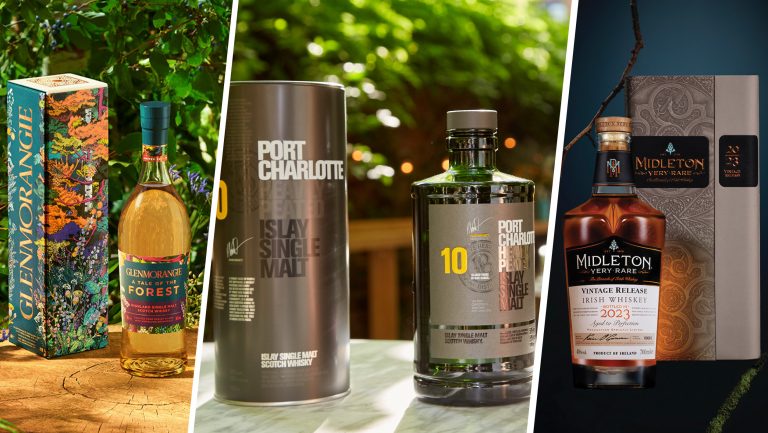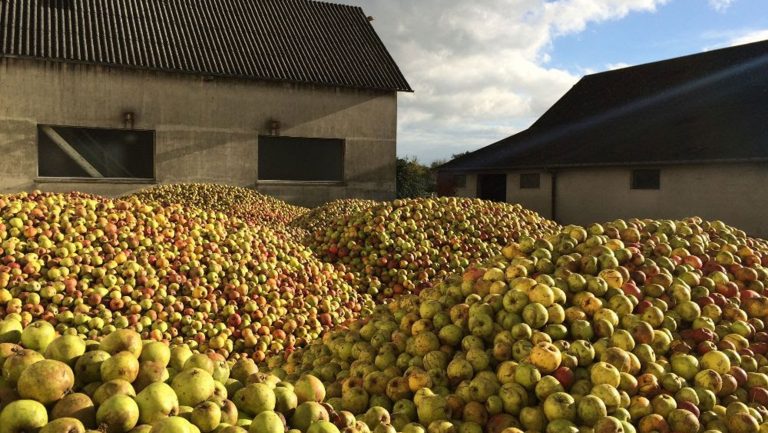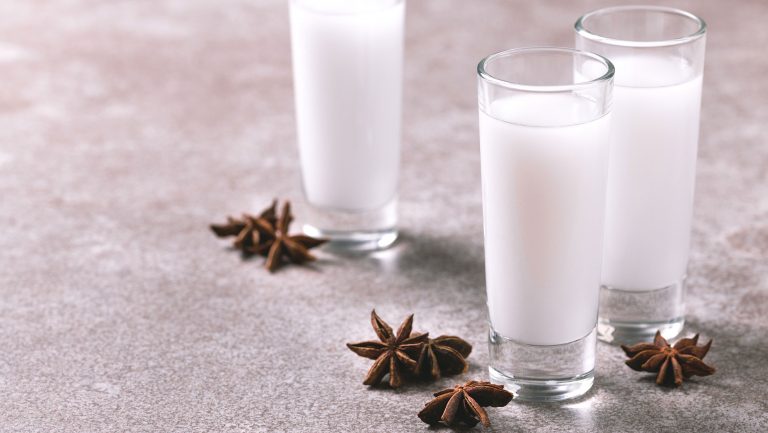It’s a Friday night in Manhattan. In a stylish restaurant called Rouge Tomate, a dark jade bottle of Cassis de Mouton Rothschild stands above the brass bar on glass shelving glinting with fine mezcals, bourbons, and Scotches. It normally costs between $124 and $213 at retail. That’s steep even by the steroidal standards of New York City’s Chelsea neighborhood, which long ago layered the muscle of big money atop its bohemian bones.
But on this evening, Rouge Tomate is selling small pours from this bottle at no markup, for no profit. An ounce of this plummy liqueur swollen with velvety intensity costs just $6. “It’s tangy, it’s fruity, it’s got cool acid,” says Ryan Csanky, a distiller at Aria Portland Dry Gin who is visiting from Portland, Oregon, as he swirls the deep red liquid in his Madeira glass. “I love this idea.”
Rouge Tomate is one of a growing number of restaurants and bars around the country that are hosting events centered on “break-even bottles.” By selling many small pours, at cost, from these expensive bottles, the hosts of break-even events now allow common men and women to taste spirits that might otherwise be cracked open only by the wealthy. Allowing the 99 percent to tipple like the 1 percent has even inspired its own cheeky hashtag on Twitter: #drunkensocialism.

Don’t miss the latest drinks industry news and insights. Sign up for our award-winning newsletters and get insider intel, resources, and trends delivered to your inbox every week.
“When you do break-even bottles, the sky’s the limit because you can do something people would usually never be able to afford,” says Cristian Molina, the bartender at Rouge Tomate who started the weekly event.
The half-dozen bar managers and spirits distributors interviewed for this article cited Bobby Heugel, owner of Anvil Bar & Refuge in Houston, as patient zero for the break-even bottle fever sweeping the country. He says that the original idea wasn’t his but that he adopted it around 2011, just after opening his bar. A group of investors asked him to stock a Remy Martin Louis XIII Cognac that sells for four digits. He told them that if they paid for it, he’d stock it. Eventually, 16 people split the cost of that bottle, and Heugel poured it for them at no markup. Thus, a phenomenon was born.
“One of the cool things about the bar industry,” Heugel says, “is that when something works, people get excited about it and want to share it with their friends.”
When Justin Elliott hitched onto Heugel’s idea at The Townsend, the cocktail bar he managed in Austin, Texas, he named it the Bobby Heugel Memorial Break-Even Bottle Night. (On Twitter he promoted the event with the clarifying hashtag #bobbyisstillalive.) Now he is taking the idea elsewhere in Austin, to an Italian restaurant called Juniper, where he plans to offer at-cost pours of “super-baller Barbarescos, Brunellos, and Barolos.”
“Everybody wants to share this really special stuff with other people all the time,” says Elliott. ”The only thing standing in the way is the stupid money.”
At The Rogue Gentlemen in Richmond, Virginia, owner John Maher says he began hosting break-even bottle nights in the spring of 2016 to give “anyone the ability to try something unique without having to spend a car payment’s worth on it.” Though Virginia law prohibits bars from selling alcohol at cost, Maher says his mandated markup is the minimum. For example, he says, he recently sold small pours from 12-year-old and 10-year-old bottles of Van Winkle bourbon—that sell on secondary markets for hundreds of dollars—for around $9 and $8, respectively.
In Seattle, Mulleady’s Irish Pub began opening break-even bottles in early 2015 on the first and 15th of every month. On those dates, the pub is now consistently packed, says owner Travis Stanley-Jones. He reflected on the ritual among bar employees of sharing the Italian liqueur Fernet-Branca, and how it became known as a “bartender’s handshake.” He sees break-even bottle nights as a modification of that ceremony—the bar’s handshake with its customers.
Back in New York at Rouge Tomate, Sean Kerby, a spirits sales representative who calls himself a spiritual adviser, visited his friend Molina on a recent break-even night. Kerby had originally proposed the idea to Molina after learning about it from—who else?—Bobby Heugel. Molina lined up the recent break-even bottles he’d poured from: a Goutte de Poire Williams, usually $35 an ounce, sold for $6; a Double Zero apple brandy, usually $22, sold for $4; a 23-year-old Panama-Pacific rum, usually $19, sold for $4; a La Venenosa Raicilla mezcal, usually $38, sold for $7; and a Navazos Palazzi Spanish brandy, usually $30, sold for $7.
“You’re educating, you’re sharing,” Kerby said to Molina.
Molina nodded and slid him an ounce of a cassis he’d never tasted before, and might never taste again.

Dispatch
Sign up for our award-winning newsletter
Don’t miss the latest drinks industry news and insights—delivered to your inbox every week.
Nate Schweber is a freelance journalist from Missoula, Montana, now living in Brooklyn, New York. His work has appeared in The New York Times, Al Jazeera America, Trout Magazine, and All About Beer Magazine. In 2011 he coauthored the book Indiana Breweries with John Holl.







